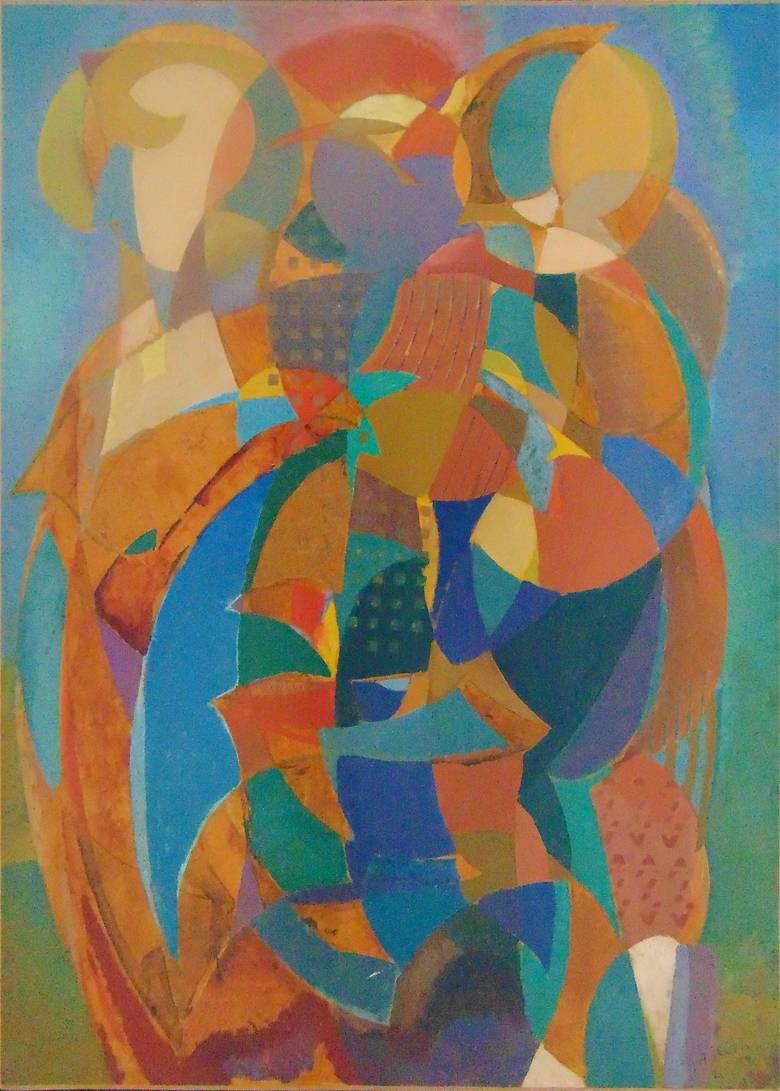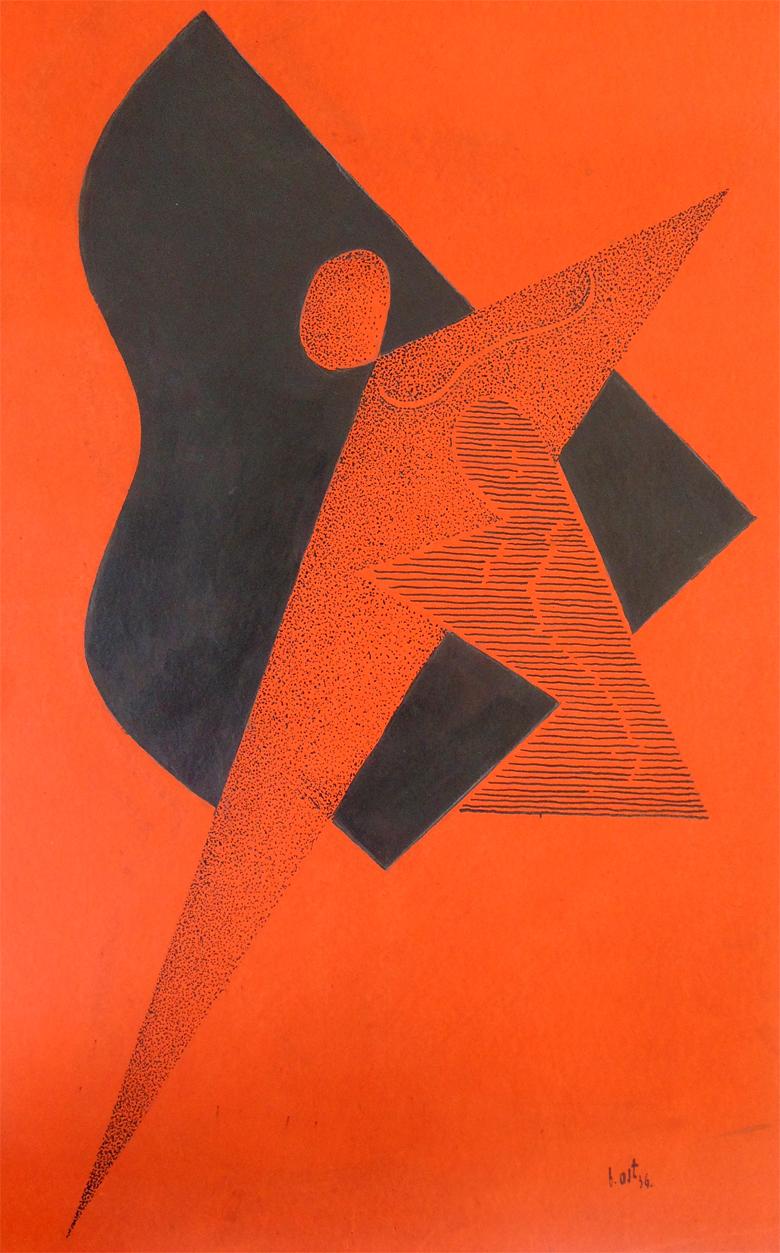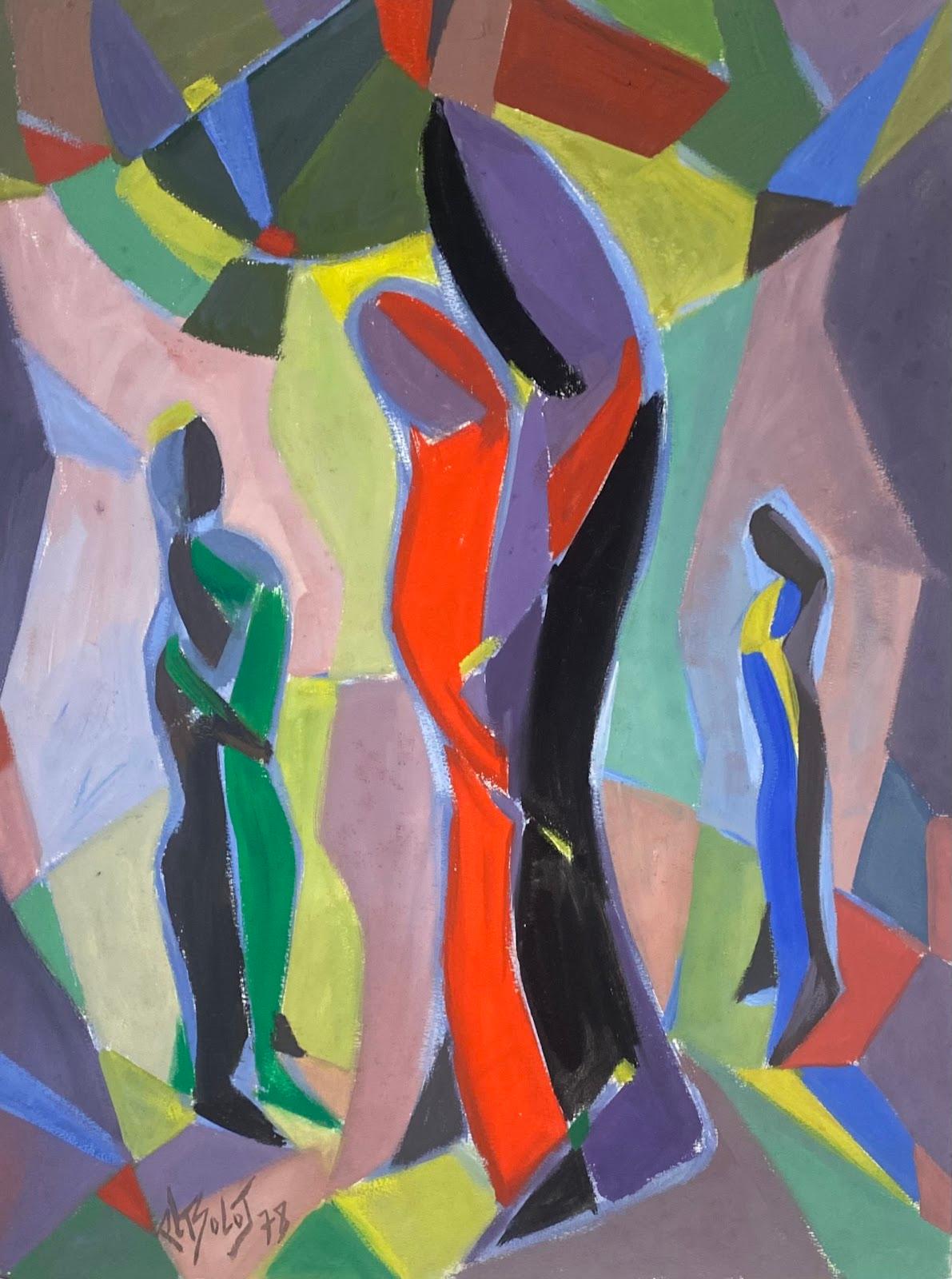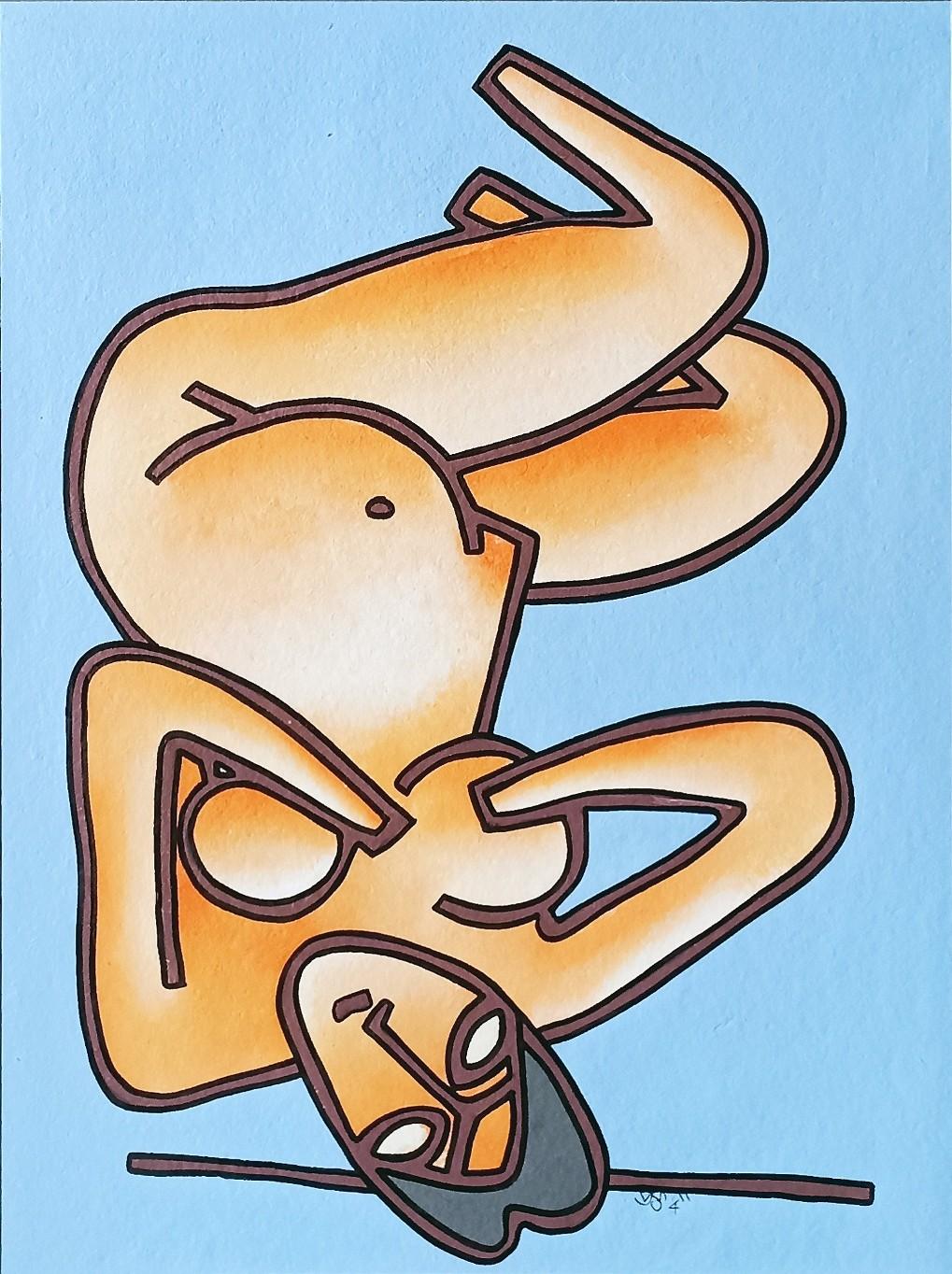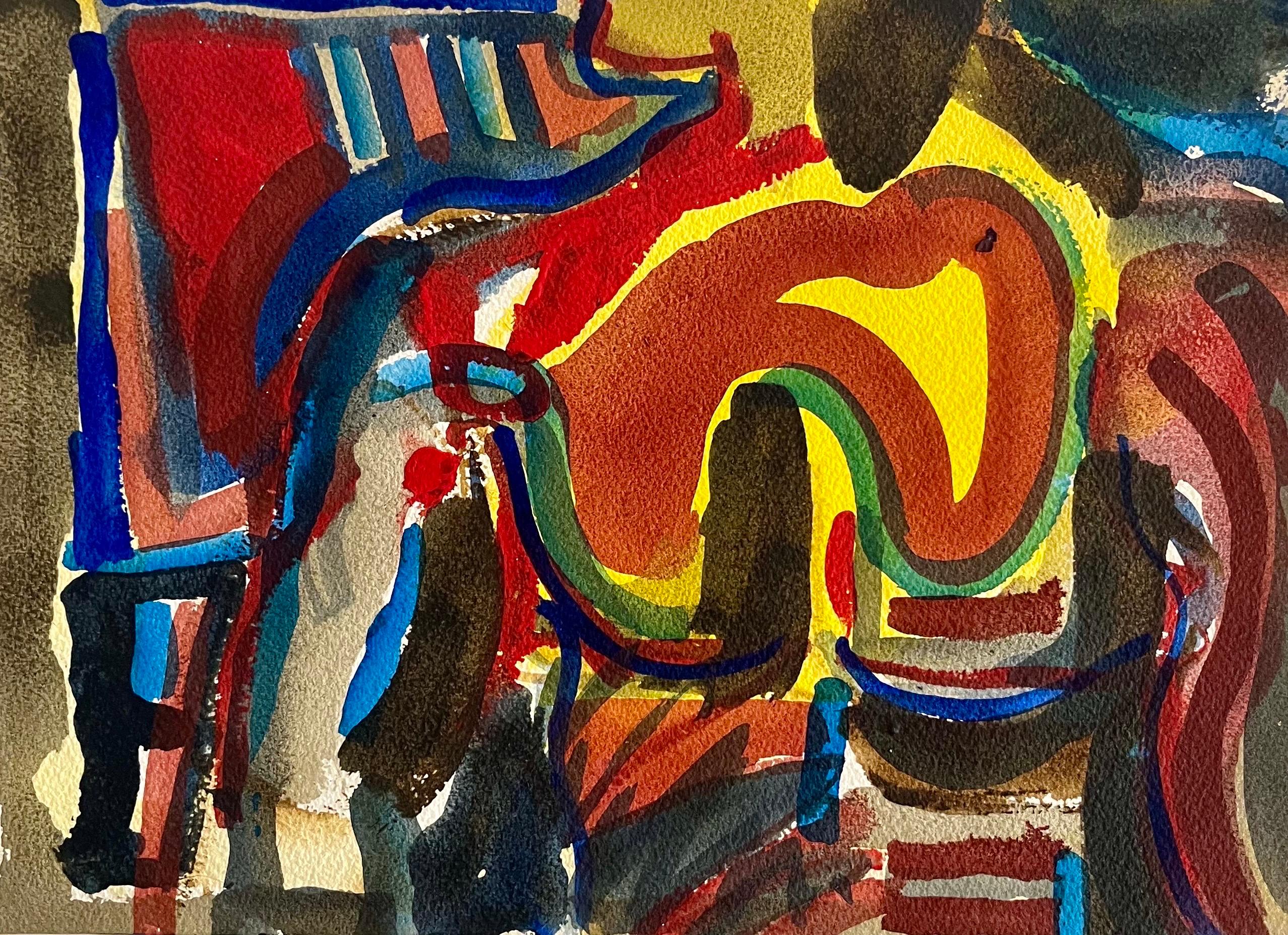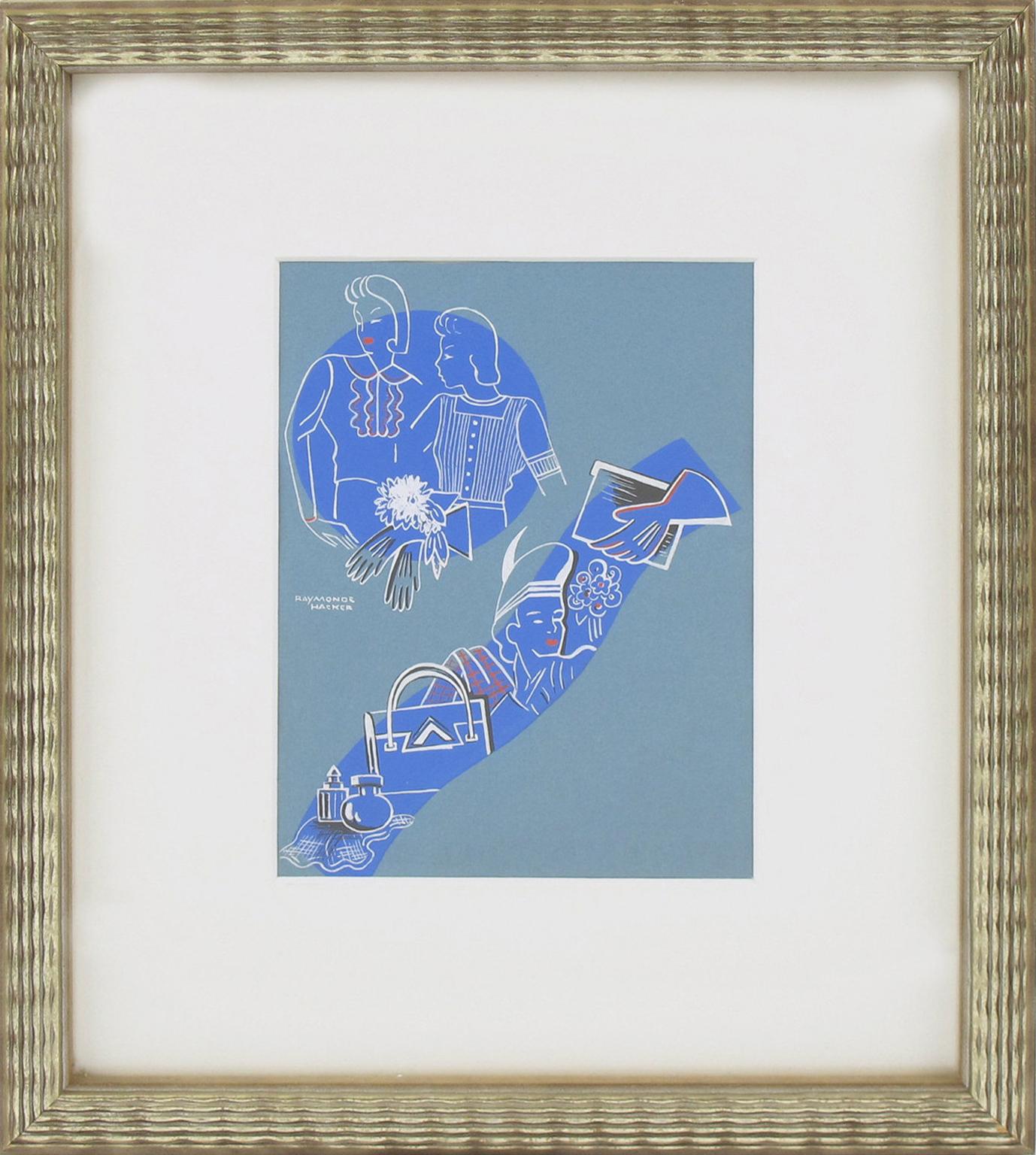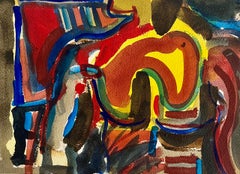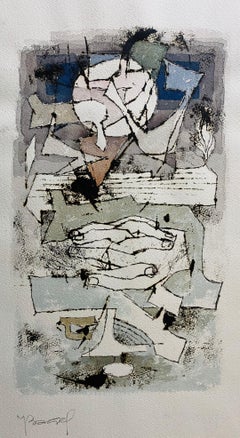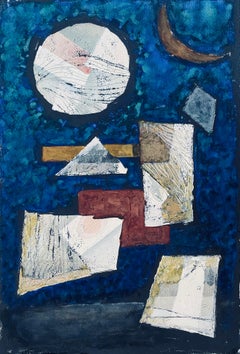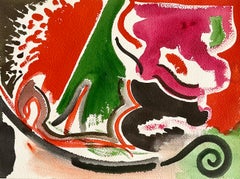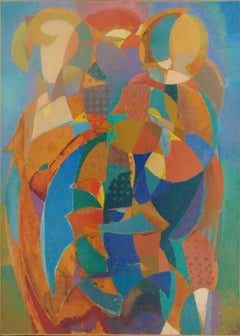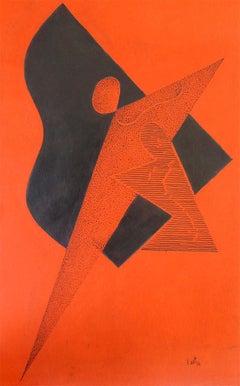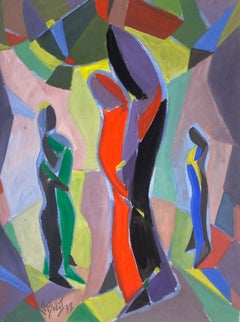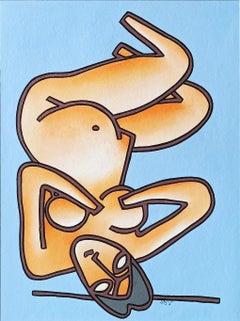Items Similar to Constructivist of Futurist gouache painting
Want more images or videos?
Request additional images or videos from the seller
1 of 6
Ivan KurachConstructivist of Futurist gouache painting
$950
£725.32
€838.10
CA$1,333.62
A$1,486.46
CHF 779.89
MX$18,152.08
NOK 9,875.15
SEK 9,333.52
DKK 6,255.12
About the Item
Ivan Kurach (1909 – 1968) Ukranian-Italian lived and studied in Italy. Russian Constructivist or Futurist style work on paper. there is some creasing to the paper but it should lay flat when framed.
Well known both in Europe and in the United States, his paintings are found in famous private collections and in museums all over the world. He spent most of his time between his studios of New York City and Milan, Italy. His work is another example of how very modern technique and sensitivity can freely fuse into the rigid rule of the most beautiful Italian pictorial tradition.
A soldier in World War II, he was a faithful interpreter of that tragic period; with gray and somber colors, with sad visions, he portrayed those days with force and meaning.
Born in the Ukraine, Kurach (or Kuracie) studied in the academies of Lviv, Warsaw, and Berlin. He then moved to Italy, continuing his studies in Rome and then Milan. Despite his emigration, the Ukraine and her people never left his art.
- Creator:Ivan Kurach (1909 - 1968, Swiss, Ukrainian)
- Dimensions:Height: 15.75 in (40 cm)Width: 11.82 in (30 cm)
- Medium:
- Movement & Style:
- Period:
- Condition:there are a couple of creases in the paper. should not be visible when matted and glazed.
- Gallery Location:Surfside, FL
- Reference Number:1stDibs: LU38210485632
About the Seller
4.9
Platinum Seller
Premium sellers with a 4.7+ rating and 24-hour response times
Established in 1995
1stDibs seller since 2014
1,786 sales on 1stDibs
Typical response time: <1 hour
- ShippingRetrieving quote...Shipping from: Surfside, FL
- Return Policy
Authenticity Guarantee
In the unlikely event there’s an issue with an item’s authenticity, contact us within 1 year for a full refund. DetailsMoney-Back Guarantee
If your item is not as described, is damaged in transit, or does not arrive, contact us within 7 days for a full refund. Details24-Hour Cancellation
You have a 24-hour grace period in which to reconsider your purchase, with no questions asked.Vetted Professional Sellers
Our world-class sellers must adhere to strict standards for service and quality, maintaining the integrity of our listings.Price-Match Guarantee
If you find that a seller listed the same item for a lower price elsewhere, we’ll match it.Trusted Global Delivery
Our best-in-class carrier network provides specialized shipping options worldwide, including custom delivery.More From This Seller
View AllMod Abstract Expressionist Modernist Edward Avedisian Color Field Art Gouache
By Edward Avedisian
Located in Surfside, FL
Edward Avedisian Gouache Watercolor Abstract Painting on Arches paper. (notebook cover not included)
Unsigned, (bears name verso in pencil.)
Dimensions: 10" X 14"
Late 1970s, early 1...
Category
1970s Abstract Expressionist Abstract Paintings
Materials
Watercolor, Gouache
Polish French Judaica Watercolor Gouache Painting Original Bauhaus Yiddish Art
By Moses Bagel Bahelfer
Located in Surfside, FL
Moses Bahelfer BAGEL (1908-1995)
Moses Bagel (born Moshe Bahelfer) was a Polish-born Jewish artist and graphic designer associated with the original Bauhaus and then the School of Pa...
Category
20th Century Modern Figurative Drawings and Watercolors
Materials
Ink, Watercolor, ABS
Polish French Judaica Watercolor Gouache Painting Original Bauhaus Yiddish Art
By Moses Bagel Bahelfer
Located in Surfside, FL
Moses Bahelfer BAGEL (1908-1995)
Moses Bagel (born Moshe Bahelfer) was a Polish-born Jewish artist and graphic designer associated with the original Bauhaus and then the School of Pa...
Category
20th Century Modern Figurative Drawings and Watercolors
Materials
Ink, Watercolor, ABS
Mod Abstract Expressionist Modernist Edward Avedisian Color Field Art Gouache
By Edward Avedisian
Located in Surfside, FL
Edward Avedisian Gouache Watercolor Abstract Painting on Arches paper. (notebook cover not included)
Unsigned, (bears name verso in pencil.)
Dimensions: 10" X 14"
Late 1970s, early 1...
Category
1970s Abstract Expressionist Abstract Paintings
Materials
Watercolor, Gouache
Mod Abstract Expressionist Modernist Edward Avedisian Color Field Art Gouache
By Edward Avedisian
Located in Surfside, FL
Edward Avedisian Gouache Watercolor Abstract Painting on Arches paper. (notebook cover not included)
Unsigned, (bears name verso in pencil.)
Dimensions: 10" X 14"
Late 1970s, early 1...
Category
1970s Abstract Expressionist Abstract Paintings
Materials
Watercolor, Gouache
Large Modernist Abstract Expressionist Watercolor Painting Bauhaus Weimar Artist
By Pawel Kontny
Located in Surfside, FL
Abstract watercolor composition bearing the influence of the earlier color-block compositions of Paul Klee.
Pawel August Kontny, (Polish-German-American artist) He was born in Laura...
Category
Mid-20th Century Abstract Expressionist Landscape Paintings
Materials
Watercolor, Archival Paper
You May Also Like
Abstract Composition - Signed Painting Hungarian Cubism
By Alfred Reth
Located in London, GB
ALFRED RETH 1884-1966
Budapest 1884-1966 Paris (Hungarian/French)
Title: Abstract Composition, 1939
Technique: Original Signed and Dated Oil and Mixed Technique painting on Board
...
Category
1930s Cubist Abstract Paintings
Materials
Oil
Abstract Figure - Czech Art
Located in London, GB
The work is hand signed in ink by the artist "b.ost" in the lower right corner, and hand dated "36" next to the signature.
The drawing was created in 1936.
Provenance: Collection So...
Category
1930s Modern Abstract Drawings and Watercolors
Materials
Paper, Ink
1970's French Modernist Gouache Painting Colorful Cubist Figures
Located in Cirencester, Gloucestershire
by Paul-Louis Bolot (French 1918-2003)
signed & dated 1978
original gouache painting on thick paper/ card
unframed
condition: very good and sound; the edges have a few curls and scuf...
Category
Mid-20th Century Cubist Figurative Paintings
Materials
Gouache
Untitled, Acrylic on Paper by Modern Artist "In Stock"
By Prokash Karmakar
Located in Kolkata, West Bengal
Prakash Karmakar – Untitled, 28 x 20 inches (unframed size)
Acrylic on Paper, 2004
( Unframed & Delivered )
In this playful yet sensual acrylic on paper, Prokash Karmakar d...
Category
Early 2000s Modern Figurative Paintings
Materials
Paper, Acrylic
French Art Deco Original Gouache Illustration Drawing by Raymonde Hacker
Located in Atlanta, GA
A French Art Deco illustrative drawing, hand painted in ink and gouache on blue laid paper. The design includes a collection of fashion accessories, handbags, gloves, hats, and perfu...
Category
1930s Art Deco Figurative Drawings and Watercolors
Materials
Paper, Ink, Gouache
Construction, Abstract Original Painting, Acrylic Paper, Framed
Located in Granada Hills, CA
Artist: Mkrtich Sarkisyan (Mcho)
Work: Original Painting, Handmade Artwork, One of a Kind
Medium: Acrylic on Paper
Year: 2023
Style: Abstract Art
Title: Construction
Size: 12" x 16...
Category
2010s Impressionist Abstract Paintings
Materials
Paper, Acrylic
More Ways To Browse
Italian Futurist Art
Italian Futurist Painting
Russian Constructivist
French Nude Oil Paintings
Social Realism
Master Copy Painting
Miniature City
Unknown Master Painting
Painting Of Sofa
Gold 1976
Theatre Canvas
Antique Painting Girl
Jewish Art Framed
Portraits Of Native Americans
Oil Painting Portrait Spanish
Depression Painting
Jean Michel Basquiat Signed
Oil Painting Conversation
